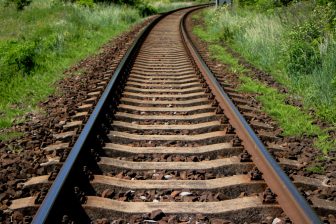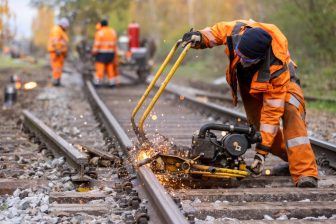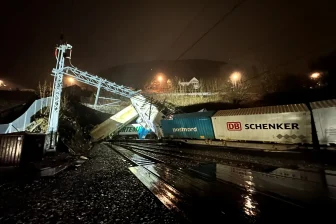Thales to replace end-of-life axle counters in Netherlands
This year, technology company Thales will start replacing thousands of axle counters and hundreds of associated system boxes. These sensors on the track, spread across the Netherlands, ensure safe train detection on routes that do not use track circuits to determine a train’s position. The current system is now over 25 years old and needs to be replaced.
ProRail put the replacement programme out to tender in 2017. Just before the end of that year, Thales was announced as the winning bidder, and it began the development and validation work. Now, two years on, ProRail has approved everything and the programme will be rolled out. The first route to be equipped with the new AzLM system is Zwolle to Groningen. This will be followed by the Theemswegtracé route in Rotterdam and the replacement of the old AzL90 system.
Quarter of the network
In the next decade, all 2,500 of the existing axle counters and 220 system boxes on the Dutch railway network will be replaced. This comprises only existing secondary routes, where trains are not detected by track circuits, and where there are already axle counters. According to estimates by ProRail and Thales, this is equal to approximately a quarter of the country’s total network.
The number of counters on a route depends on the route’s length, but also the number of switches and crossings. “It can be a kilometre, but also just a few dozen metres. In any case, there is always a detection point that counts the number of axles upon entry [to a section of the route], and another at the end that counts how many axles have left”, explains Peter Aukes, Project Manager at Thales. “The system knows when the track is occupied, and when it is free.”
At the end of the 1980s, the Dutch government and the NS as it was then decided to equip routes without ATB-EG with a detection system including ATB-NG. They did not opt for track circuit systems – commonplace at the time – that involve the axle of a passing train connecting the left and right rails, thereby short-circuiting the track circuit. Instead, they chose a system with axle counters from the French company Alcatel, which has since been taken over by Thales.
No insulated rail joints
One of the advantages of a system with axle counters compared to track circuits is that no insulated rail joints are required to separate sections of the track. Such joints are weak, require a lot of maintenance and regularly cause defects. Conversely, the disadvantage of a system with axel counters is that they often cause problems after engineering works. For example, after a maintenance train has entered the part of the track being worked on it, it might be unclear if it has left again, once work has been done on the counters or rails. Consequently, a track-treatment train must be run on the track at low speed to see if the maintenance train is actually still there.
The main improvements with the new system are that it is more compact, more detection points can be connected to a single system box (32, compared to 10 in the old system), and, most significantly, that the detection points mounted on the track can be left in place while the track is being grinded or mended. In the past, these needed to be removed before grinding, and then reinstalled and recalibrated afterwards. Since this will no longer be necessary, each project can easily save a number of hours. While previous detection points were attached to the rail and stuck out a lot, the new ones will be installed on the sleepers and are therefore less vulnerable.
ERTMS and ATO
The new axle counters are intended for sections of the rail network where no ERTMS will be used. For these sections, ProRail will be launching another tender. “Technically speaking, we could work very well with these systems”, explains ProRail Train Safety Project Manager Bas Hendrix. “That’s also one of the reasons why we’ve set the requirement for the system to be EULYNX-ready, i.e. it can use the European communication standard for rail data traffic. This means that we will avoid a vendor lock. The counters must be able to communicate with the systems of all other providers.”
Both the detection points and system boxes are more compact. “Through technical developments in recent years, computer systems have become much smaller, though in this case this offers no advantage. What is much more important is that the components are robust, as they are outside, on the track, and the people that work with them are not computer programmers. In other words, the counters must be able to withstand an impact”, says Aukes. When a defect occurs in the system, a laptop can be used to determine where the problem comes from remotely. Furthermore, the system generates fault reports itself, often at an early stage, so interventions can be made before an actual defect emerges. The next development for the system will be to use optical fibres as detection sensors.
Maintenance
Alongside developing and installing the train detection system, Thales is also responsible for its third-line maintenance for the next 30 years. This means that after the decade needed for the system to be installed, maintenance will continue for another two decades. Furthermore, if sections of the track are changed, Thales will be responsible for the engineering of the infrastructure data software.
In the future, the system may also be used to safeguard currently unmanned level crossings. “In our tendering, the most important demand is availability. For the new axle counters, this equates to around 99 per cent reliability. It’s what is known as a SIL4 system, which means that the likelihood of failure is as low as possible. When there is a defect, the system always makes the safe choice. If there is any doubt, the signals are always put on red.”



